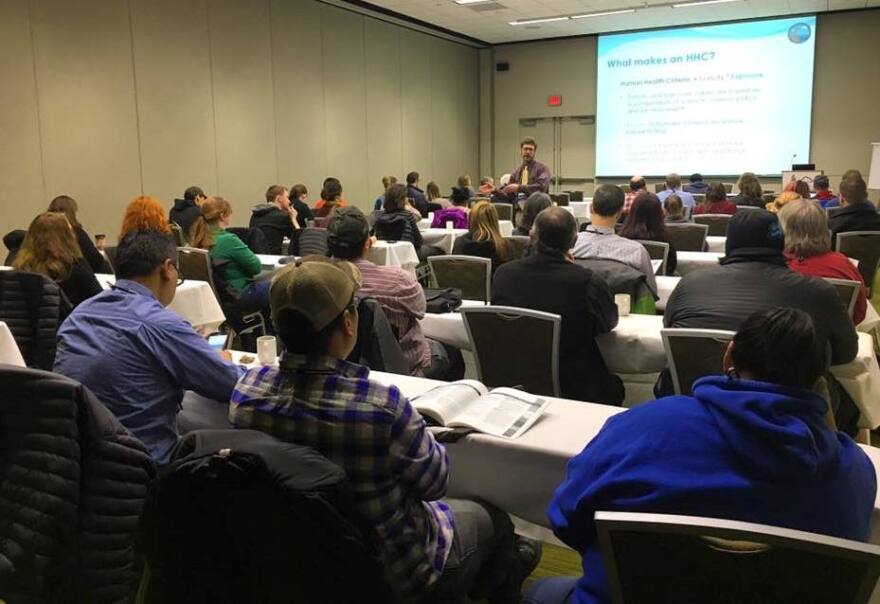The 19th annual Alaska Forum on the Environment wraps up today after five days of presentations on environmental challenges confronting the state. Dozens of organizers and more than a thousand participants came to the event to find solutions, but many also found themselves dealing with a new challenge stemming from the changed political environment.
The Denai’na Center in downtown Anchorage has been buzzing over the past few days with more than a thousand participants who showed up for this year’s forum.
“This year, we’re actually seeing a record number of pre-registrations,” Executive Director Kurt Eilo said Monday “So, we’re pretty excited by that.”
Eilo says organizers presented dozens of workshops and talks focused on practical, nuts-and-bolts discussions about smaller-scale environmental challenges that Alaska’s urban and rural communities face. Like providing clean water to villages still using honey buckets, and cleaning up hazardous waste sites and boosting recycling programs statewide. And bigger, climate change-related issues, like thawing permafrost and coastal erosion.
“There’s a lot of concerns and uncertainty out there,” he said, “and a lot of folks are here to learn more and be able to learn how to do more in these uncertain times.”
Much of that uncertainty is due to the Trump administration’s threats to cut federal support and funding for research and remediation of environmental problems. Some of the speakers at the event talked about that in their presentations, as did participants in and out of the sessions. But Eilo says the forum isn’t a political event.

“The purpose for folks coming here is to learn more about how to affect their communities and do good work,” he said. “And that’s what we want to encourage them to do – to roll up their sleeves and continue to do good work for the environment.”
But despite organizers’ efforts to keep the focus on the environment, politics managed to insinuate itself into the forum, when Bloomberg News reported Thursday that officials with the federal Environmental Protection Agency had slashed the size of its contingent sent to the forum in half, from 34 to 17 presenters.
Eilo told the Alaska Public Radio Network that EPA officials didn’t tell him about the cutback until three days before the event began.
“On Friday this past week, we got a phone call from the local office of EPA and we were informed that EPA was directed by the White House transition team to minimize their participation in the Alaska Forum on the Environment to the extent possible,” he said in an interview Thursday.

EPA officials told Bloomberg the cutback was an effort to reduce costs. But other federal agencies presenting at the forum reportedly didn’t reduce the size of their contingents. Eilo told APRN he’s never seen such a cutback in any previous forum. He says he worked hard to minimize the impact, and that only one EPA session was canceled. But some participants say they couldn’t get the information they’d hoped for from the fewer, lower-level staffers who showed up. And Elizabeth Dabney with the Fairbanks-based Northern Alaska Environmental Center says EPA blew a chance to talk face-to-face with Alaskans.
“There (were) opportunities at the Forum on the Environment to have one-on-one conversations and exchange information,” she said. “And it was an opportunity to build those relationships. And without them there, that’s not possible.”
Dabney says a lot of Alaskans who’d traveled far at considerable expense were disappointed they weren’t able to find out about grant funding and other EPA programs.
“You have a lot of people (who) are traveling to Anchorage every year specifically to network and meet those people,” she said. “And with that diminished, that might have an affect on the work that’s being done.”
Eilo told APRN that some of the EPA staff who were told to stay away worked just a few blocks away from the Denaina Center.
APRN/Alaska's Energy Desk reporter Rachel Waldholz contributed to this story.



